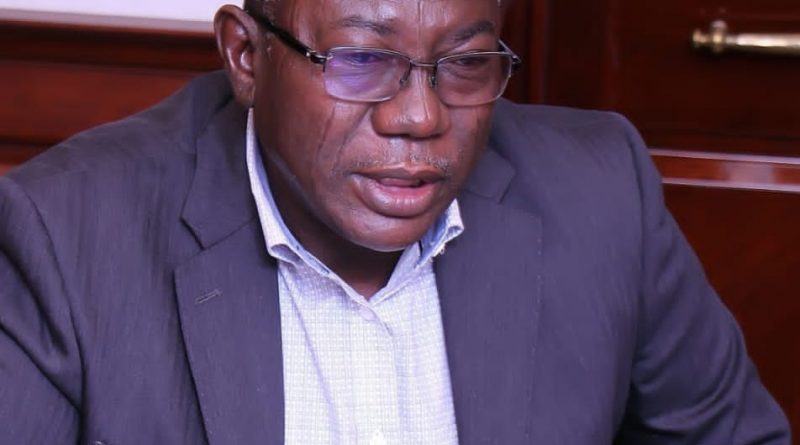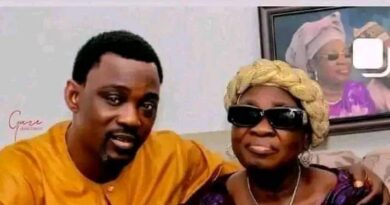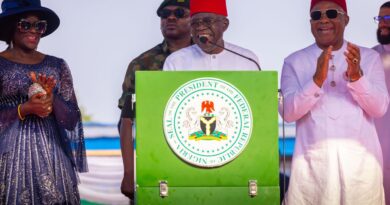Showcasing Nigeria’s Huge Tourist Potentials
By Ayansola Modupe Elizabeth
There is no doubt that the National Commission for Museums and Monuments (NCMM) has huge responsibilities to graple with. The Commission is under the Federal Ministry of Information and Culture.
In an increasing competitive global village that we live in, survival depends on how far an organization promotes its products. This is the beauty of competition occasioning choice on the part of the customers. This has made it imperative for organizations not only to package quality products but to shout at the rooftops about the existence of such products while insisting that a particular product is the best available. The scenario becomes expedient among competitors.
In the tourism industry, competition exists no less than it is obtainable in other sectors of the economy. Some countries even survive solely on tourism. The national Commission For Museum and Monuments and the tourism board have overlapping responsibilities suggestive of a seeming competition.
Tourists are leisure and pleasure seekers. The various museums dotting the Nigerian landscape have much to offer in this regard. Tourists should be exposed to the treasure house in the life of the human race (that) stores the memories of the peoples culture, dreams and hopes. It is instructive to note that the tourism board is but a specialized agent carrying put just a listed duty out of the numerous activities function of the museum.
Museum is located in every state of the federation. Some states have more than one museum. This geographical spread and the enriched cultural assist is yet to translate into a financial Eldorado not only for the nation but for the enhanced welfare of its workfare. Resources at the disposal of the federation cut across the triangular domain of men money and materials -in respect of the highly resourceful personnel from different fields of learning.
By material is intended from museum products. These products that form the core of the museum activities are the following departments: monuments and sites as well as research, training and publications.
Marketable products in the museum include cultural objects, research findings, landscape facilities, halls, archival documents, craft villages, museum kitchen, indoor games, museum shops, numerous education services among other sellable and desirous as these products are; the public remains largely uninformed of the availability of these products in the museum. The erroneous impression about the museum still revolves around the traditional belief of it being repertoire of idolatry collections.
Links have always existed between museum and tourism dating back to the ancient Greece. There is a complimentary role between them as both are involved in cultural presentation and the environment.
In this regard marketers are needed to propagate the ideals of museum making known the varieties of services available in the museum and by so doing, correcting the ill-conceived notions and beliefs of the people brought about largely by ignorance occasioned by the actions of most museum staffs.
The essence of marketing is not premised on profit generation but to justify the huge investment of the government of the preservation of our culture. Who are the potential marketers? You, I and everybody who is from director-general through the rank and file. The director-general is already doing this at the remotest part of the world.
Other category of staff should actively participate. The basis of marketing is obvious. This is without prejudice to any conscious effort in training of personnel in this regard. There is no gain saying most staffers are ideal and take to gossip, absenteeism, late coming, loitering as past time for want of productive activities.
Staff strength as deservedly risen considerably. The fulcrum of the new intakes are middle management staffs comprising mostly graduates. This category of staffs should be made productive, turn them into marketers, train them and retrain them.
Marketing is a new area in museology. Barrister Anyaegbuna writing from national museum Aba canvasses that the museum should create an awareness of its existence in order to attract visitors. In his opinion, there should be a public relation unit and establishment of auxiliary services like craft village museum kitchen, museum shops etc.
Target tourists are foreigners and other non-indigenous visitors. Marketers should be posted to airports with informative fliers on museum activities. Five star hotels is another catchment area for tourists. Museum should collaborate with hotel operators in order to bring about tourist awareness of museum products.
Heritage officers can be trained as guards patrolling on a frequent basis, this will checkmate trespassers. It will dissuade them in like manner that forest guards dissuade illegal deforestation from carrying out their notorious activities.
Practitioners of the century old smith workers have trained sufficient men and women who can take permanent stands in the museum. Better still, fairs and exhibition of craftwork can be staged periodically with collaboration with media notably the Nigerian television authority (NTA). Multinationals will fall over each other to sponsor such events.
On a final note I wish to state that the museum holds the future for building professionals if it could choose to be more attractive. Attraction lies not in the dwindling resources from government but from the internally generated revenue through aggressive marketing.
- *Ayansola, a staff of national commission for museums and monuments write from Osogbo, Osun State




